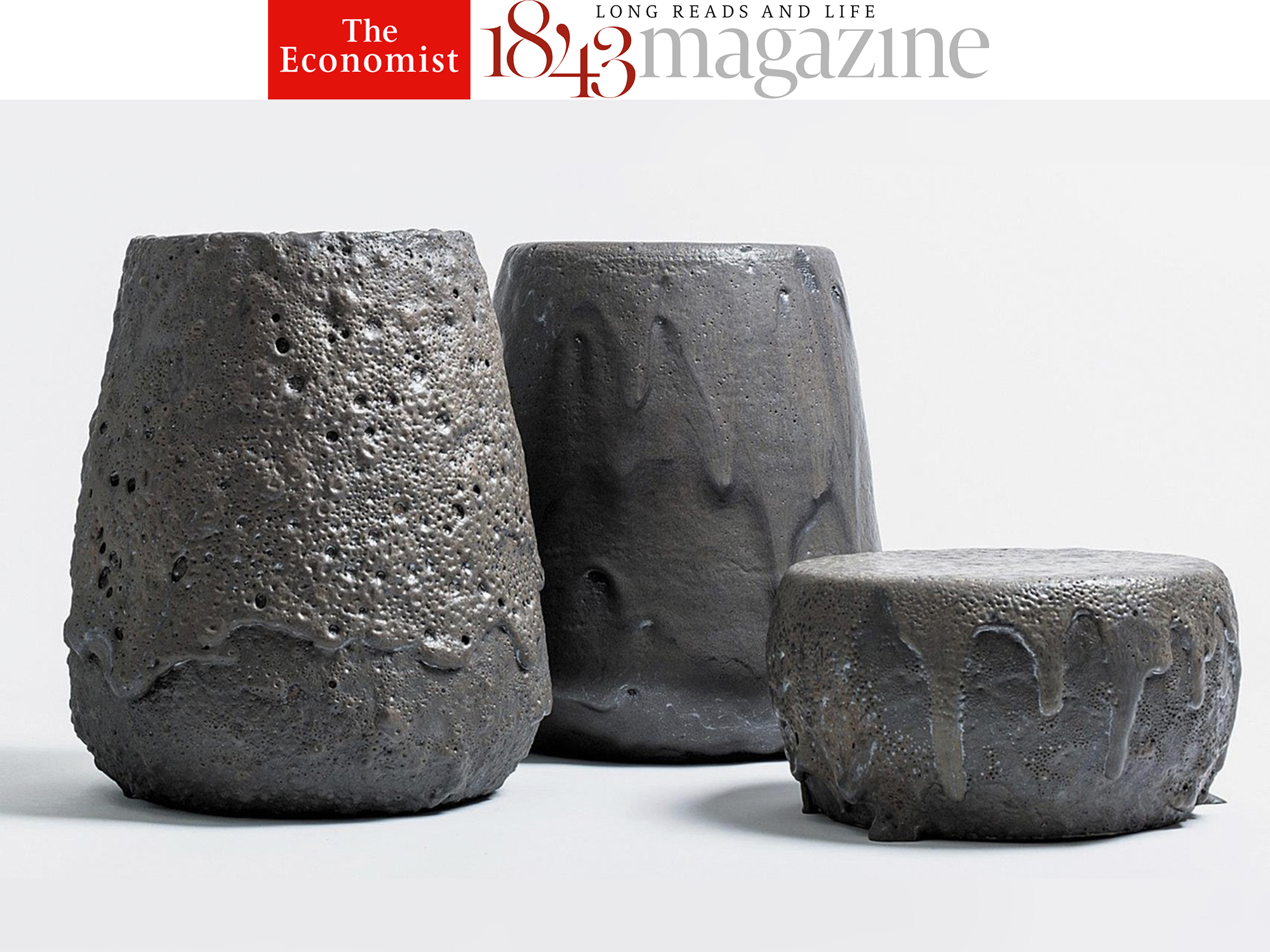By Giovanna Dunmall
Smooth or rugged, black or glazed, lava is being used to make everything from bathroom tiles to tables.
It’s one of the most temperamental natural materials but also one of the most versatile and resilient. It tolerates all temperatures and can retain heat for hours. So it’s no wonder that lava stone is widely used by high-end tile, kitchen and bathroom manufacturers. More surprising is its popularity among designers of furniture and decorative objects.
The reason they like it so much is the variety of textures they can achieve. At one extreme gt2p, a Chilean studio, recently coated a set of porcelain, stoneware and concrete stools with volcanic rock, which they melted and then poured over the pieces to give them a rugged, crater-like appearance. At the other, Charlotte Juillard designed an elegant prototype day bed, side table and mirror made out of lava quarried at Vesuvius and polished smooth. First shown at Maison & Objet in 2016, she is currently developing them into a collection with Italian volcanic-stone company Ranieri. Juillard was drawn to the material’s grey and black colour, uncommon in contemporary furniture, and also to the stone’s calming, tactile properties – “perfect for a day bed”, she says.
Among the first companies to explore lava’s potential was Made a Mano, a Danish firm. Its CEO and owner, Nanaki Bonfils, encountered it near Mount Etna in Sicily over a decade ago. “It’s an ancient material and much of Sicily is built out of it,” she says, referring to the countless churches, palazzi, sculptures, pillars and fountains made out of local volcanic stone. Though lava is quarried in other parts of the world too, including China, India and Korea, Bonfils always uses stone from Etna because, she says, it’s the most durable. While many quarries elsewhere take the more easily accessible porous upper layers of stone or produce lava powder which is then blended with basalt, those near Etna cut deeper layers of rock between 300 and 1,000 years old. “That lava is as compact and solid as marble or granite,” explains Bonfils, and it can be used in its pure form. It also has a high mineral and metal content, which means it can handle an arduous glazing process. Bonfils fires the stone at 1,500-2,000 C for up to ten days, until the colours fuse with the stone completely. “The longer you cook it, the more indestructible the glaze becomes.”
Aside from kitchen worktops, bathrooms and flooring, Bonfils has fashioned window sills, benches, tables, swimming pools and sculptural lamps out of lava. More recently she started using the stone as a building material, and is working on exteriors for architects including Bjarke Ingels and Herzog & de Meuron.










